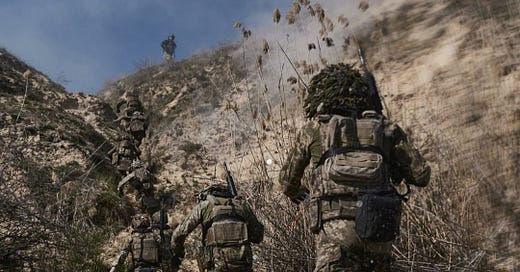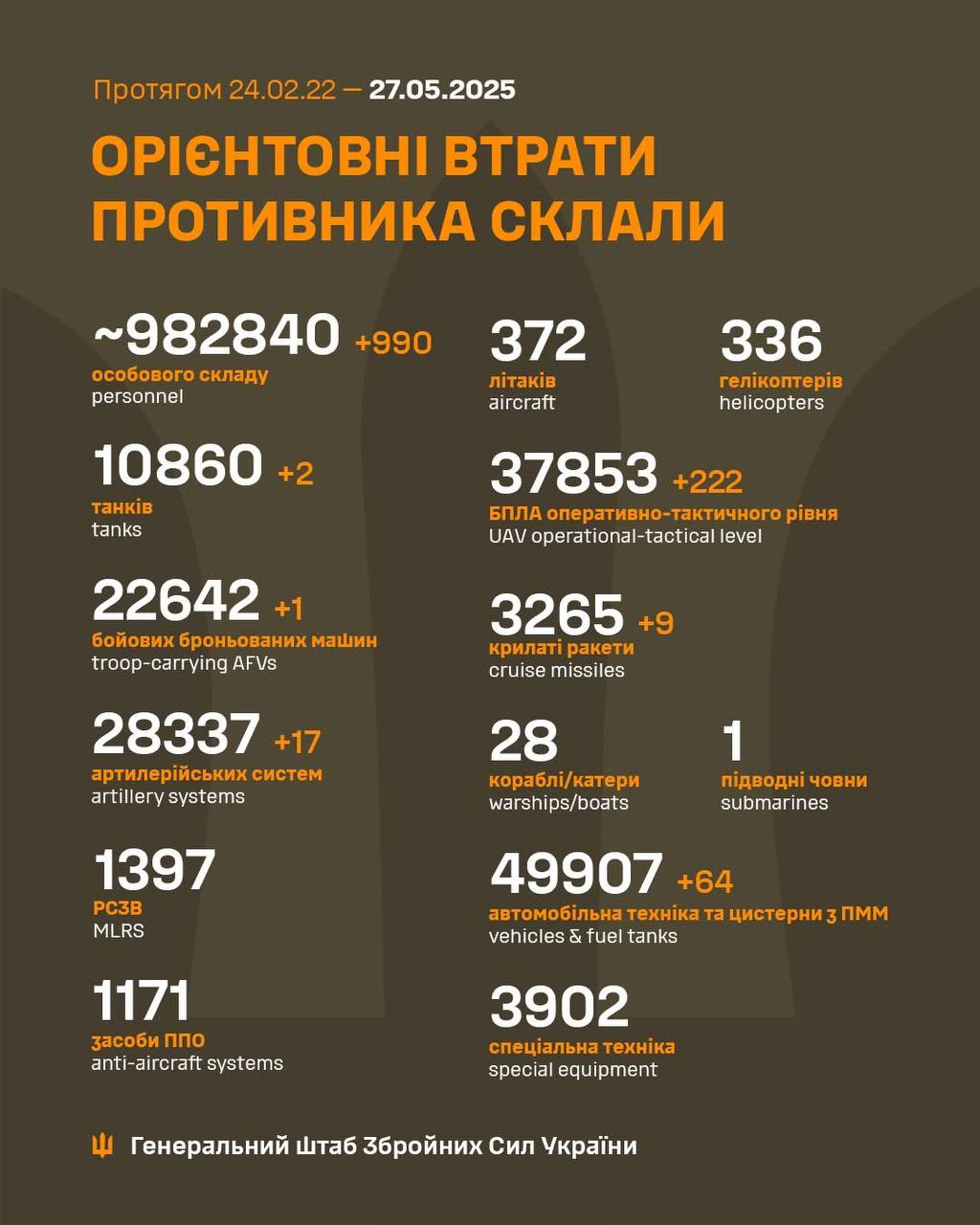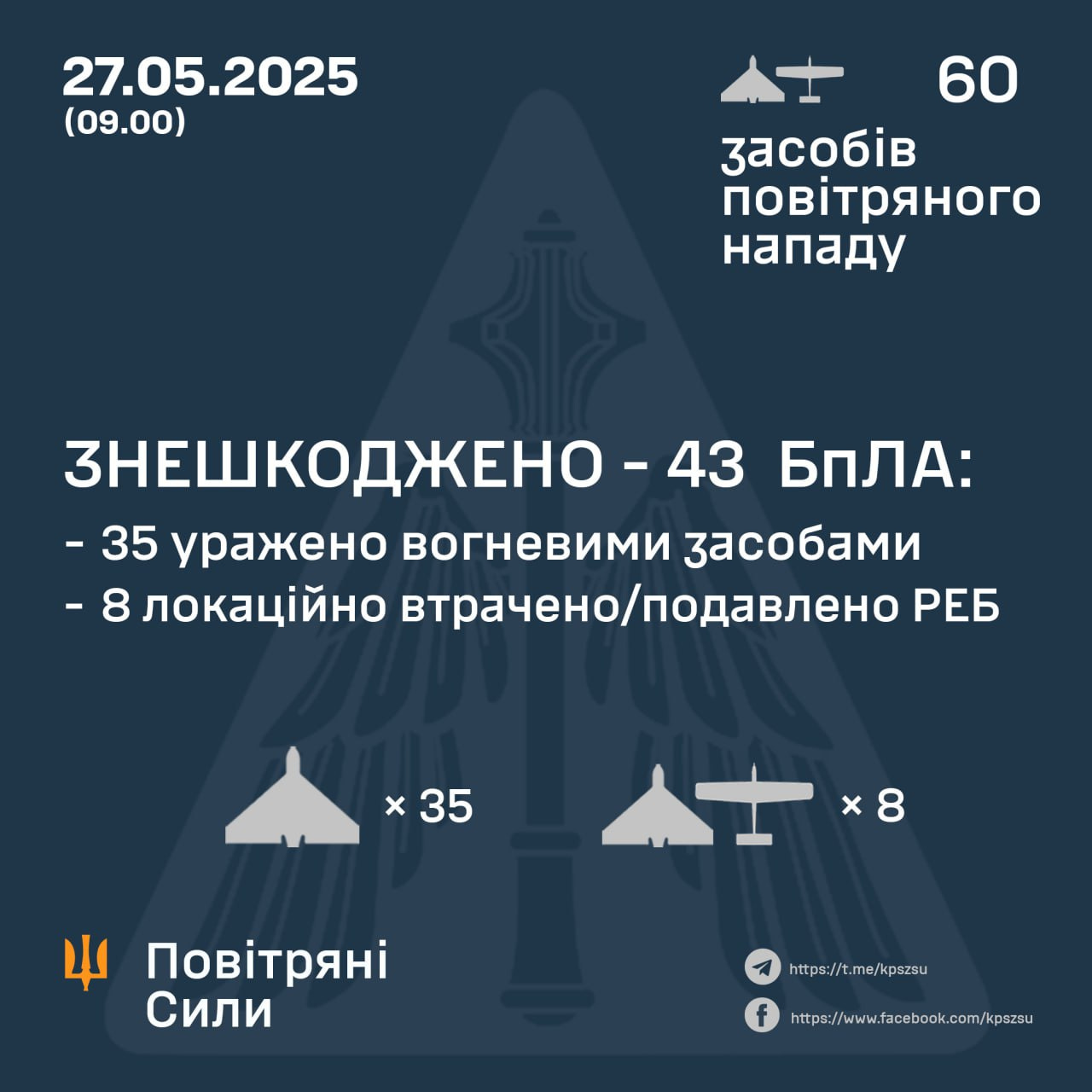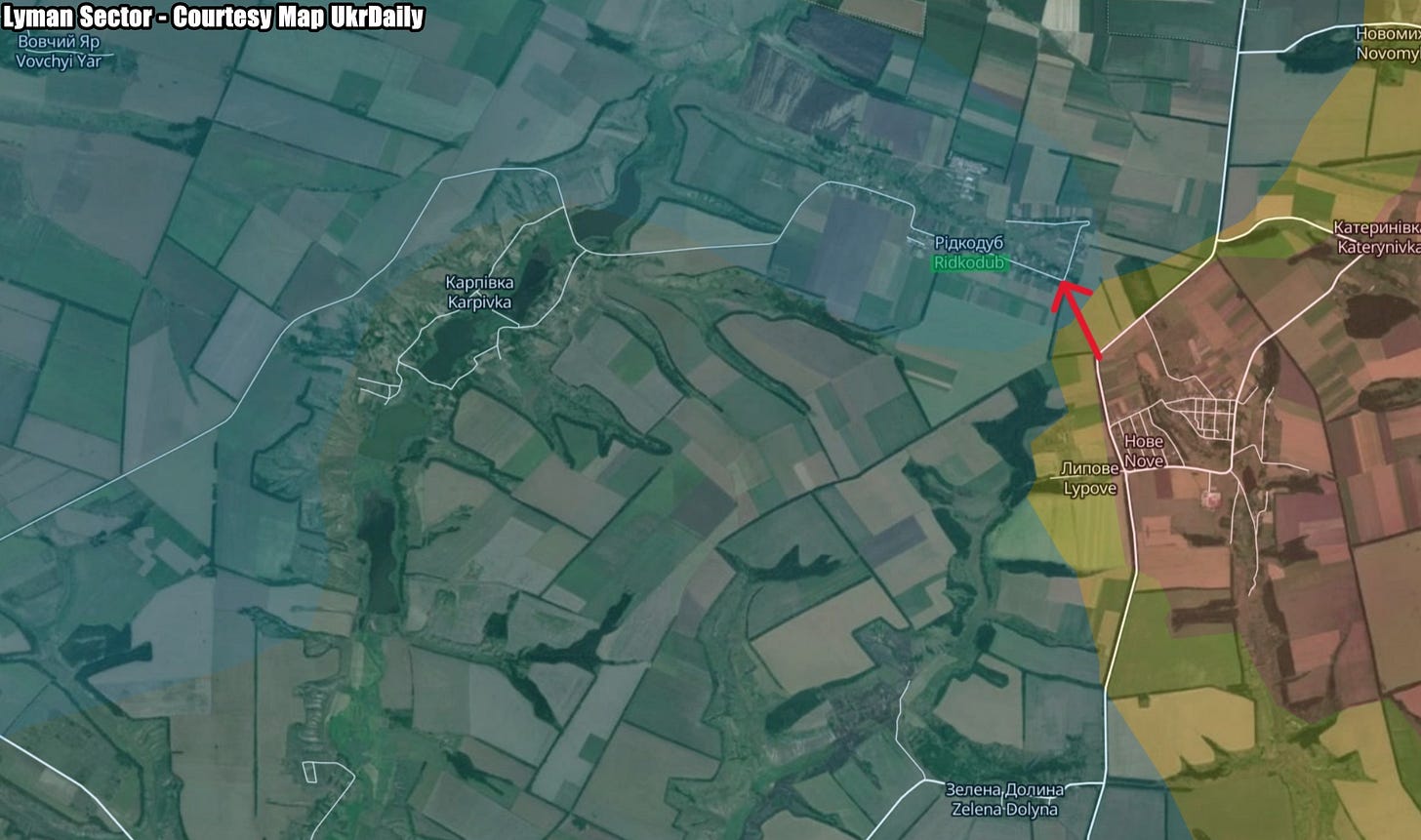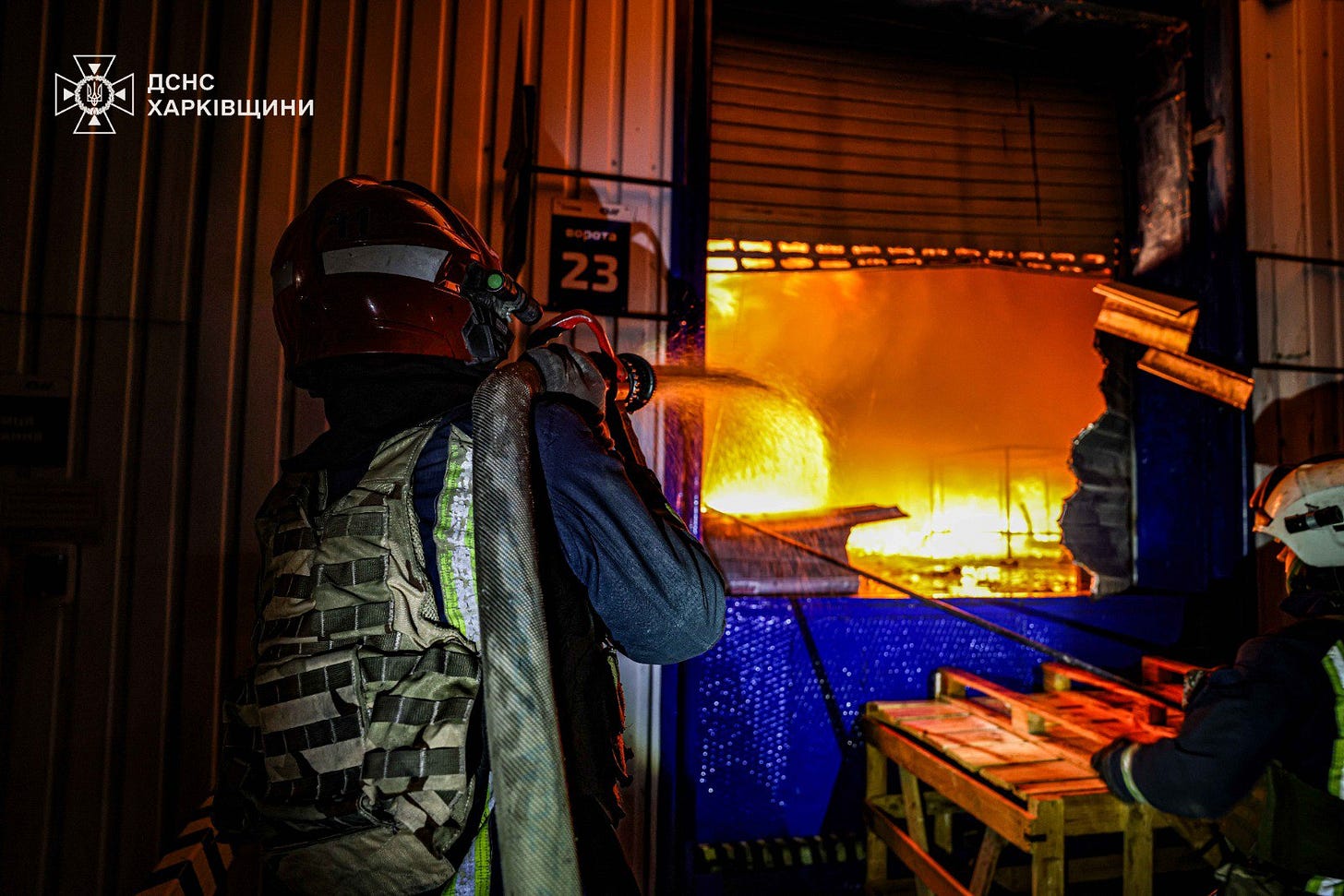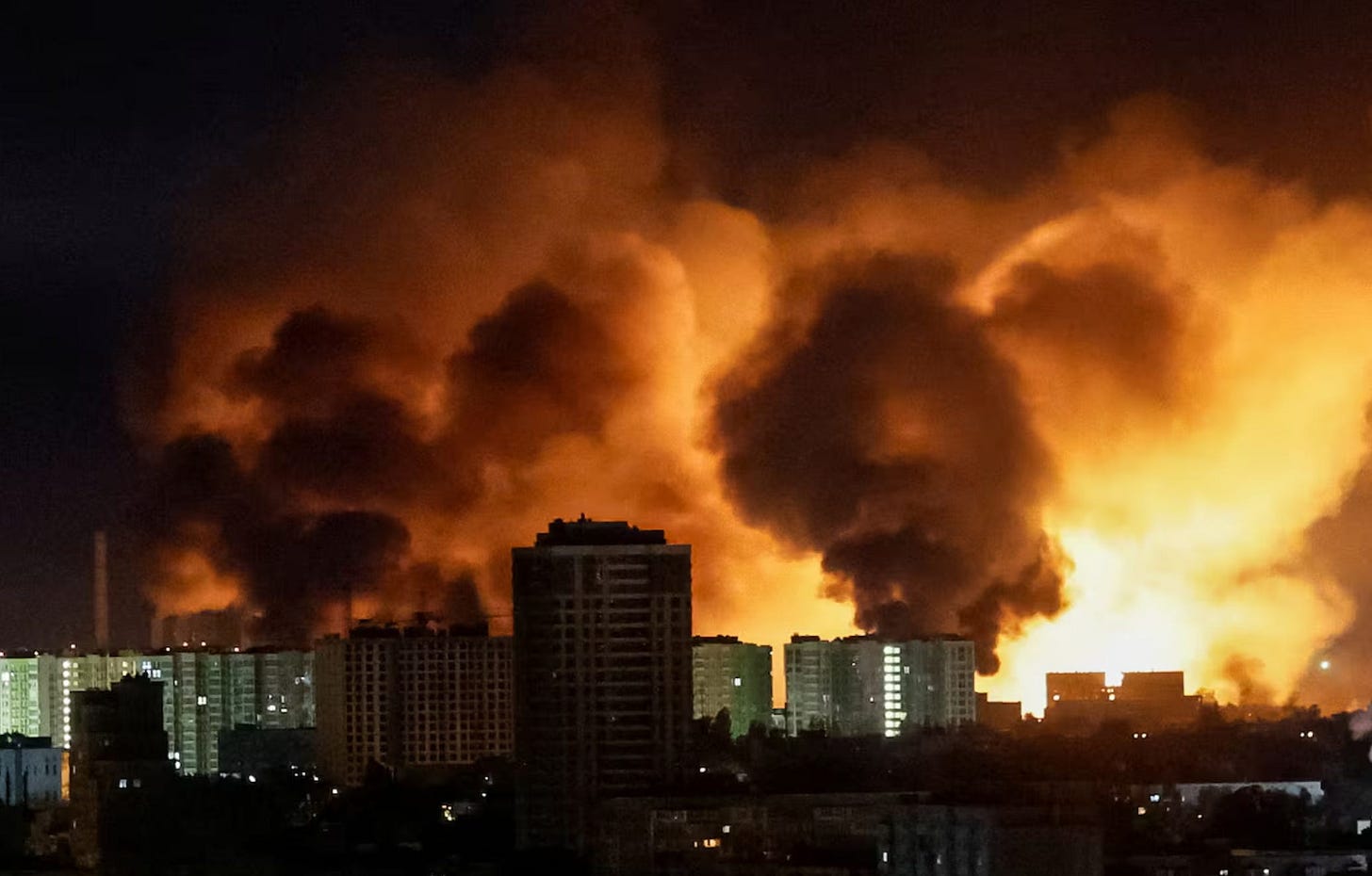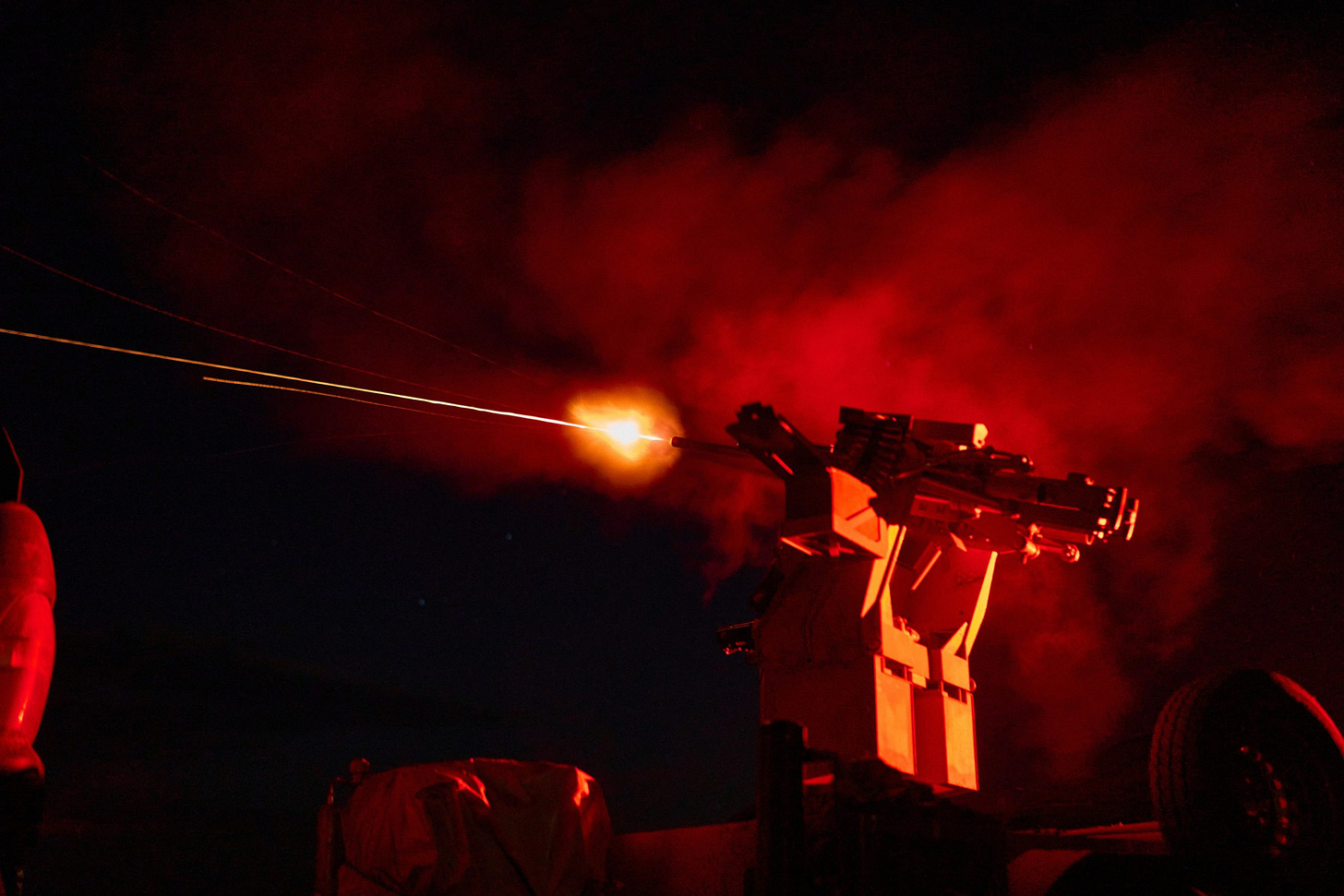Slava Ukraini! In early 2022 I began a Telegram channel aggregating news from a number of sources daily on the war in Ukraine. In June 2023 I began providing a daily draft for the Ukraine War Brief Podcast collecting news from over 70 sources daily, which formed the basis of the script. While the Podcast no longer exists I have continued to make this Brief available for my followers here on Substack for those who wish to keep up with the news from the war.
If you find the Brief informative I would appreciate it if you shared it with others.
All the latest news on the Russo-Ukraine War 6 days per week
ALONG THE CONTACT LINE
GSAFU Morning Report
For: May 27, 2025
The General Staff of the Armed Forces of Ukraine in its Operational Information update at 08:00 on May 27 stated that day 1189 of the full-scale invasion of the Russian Federation against Ukraine had begun.
The situation on the line of combat remains tense in some sectors. Ukrainian defenders continue to actively counteract the Russian aggressor, causing them significant losses in personnel, equipment and technology. Exhausting the enemy along the entire front line and continuing to disrupt the plans of Russian occupiers to advance deeper into the territory of Ukraine.
During the past day,170 combat engagements took place.
Over the past 24 hours, the enemy carried out 9 missile strikes,87 air strikes, used 3,068 attack drones and fired approximately 4,600 artillery shells across the positions of Ukrainian forces and civilians.
Air Force Daily Report
43 ENEMY UAVS DESTROYED
➖➖➖➖➖➖➖➖➖
On the night of May 27 (from 11:50 p.m. on May 26), the enemy attacked with 60 Shahed attack UAVs and simulator drones of various types from the directions: Millerovo, Orel, Kursk, Primorsko-Akhtarsk - Russia, Gvardiyske - TOT Crimea.
The air attack was repelled by aviation, anti-aircraft missile troops, electronic warfare and unmanned systems units, and mobile fire groups of the Defense Forces of Ukraine.
As of 09:00, air defenses neutralized 43 enemy Shahed UAVs (and other types of UAVs) in the east, north, and south of the country. 35 were shot down by fire weapons, 8 were lost/suppressed by electronic warfare.
Enemy air attack vehicles were hit in 9 locations, as well as downed strike UAVs falling in 3 locations.
Combat Operations in the Russian Federation
There have been no major changes to the combat environment since our last report.
The Khortytsia operational-strategic group
(Responsible for the northeastern part of Ukraine. )
Sumy Sector: Russian forces recently advanced in Sumy Oblast.
Geolocated footage published on May 25 indicates that Russian forces, reportedly elements of the Russian 83rd Airborne (VDV) Brigade, advanced into southern Bilovody (northeast of Sumy City) and likely seized the settlement.
Kharkiv Sector: Russian forces recently advanced northeast of Kharkiv City.
Geolocated footage published on May 26 indicates that Russian forces recently advanced in northern Vovchansk (northeast of Kharkiv City) and likely seized the Vovchansk Aggregate Plant.
Lyman Sector: Russian forces recently advanced in the Lyman direction.
Geolocated footage published on May 26 indicates that Russian forces reached the southern outskirts of Ridkodub (north of Lyman)
Toretsk Sector: Russian forces recently advanced in the Toretsk direction.
Geolocated footage published on May 26 indicates that Russian forces recently marginally advanced to central Popiv Yar and in the fields southeast of Poltavka (both west of Toretsk).
Additional geolocated footage published on May 26 shows Russian forces engaging with civilians in Zorya (southwest of Toretsk), including that Russian forces have likely seized the settlement and that Ukrainian forces are not contesting the settlement.
The Tavria operational-strategic group
(Responsible for the central-eastern and southeastern part of Ukraine.)
There have been no major changes to the combat environment since our last report.
The Odesa operational-strategic group
(Responsible for Kherson, Qırım, (also known as Crimea) and the Black Sea.)
There have been no major changes to the combat environment since our last report.
TEMPORARILY OCCUPIED TERRITORIES
Nothing major to report.
THE HOME FRONT
Russian attacks across Ukraine kill 2, injure 19 over the past day.
Russian attacks against Ukraine killed at least two civilians and injured at least 19 others over the past day, the Kyiv Independent reported citing regional authorities on May 27.
In Donetsk Oblast, one person was killed in the village of Rozkishne, while two others were injured in the town of Pokrovsk due to Russian attacks, Governor Vadym Filashkin reported.
In Sumy Oblast, a woman was killed and two other civilians suffered injuries in the Mykolaivka community, the local military administration reported.
In Kherson Oblast, Russia targeted 33 settlements, including the regional center of Kherson, over the past day. As a result of the attacks, eight people were injured, including two children, Governor Oleksandr Prokudin reported.
In Kharkiv Oblast, Russian strikes injured a 67-year-old man in the town of Kupiansk, as well as a 63-year-old man and an 83-year-old woman in the village of Myrne, according to Governor Oleh Syniehubov.
In Mykolaiv Oblast, Russian forces attacked the Kutsurub community with FPV (first-person-view) drones, injuring an 80-year-old man and a 66-year-old woman, the local military administration reported.
In Dnipropetrovsk Oblast, a 54-year-old man suffered injuries in a Russian attack against the Synelnykove district, according to Governor Serhii Lysak.
In Zaporizhzhia Oblast, a 17-year-old boy was injured due to an FPV drone attack on the Polohy district, the local military administration reported.
RUSSIAN WORLD
206 Ukrainian POWs die in Russian prisons, autopsies point to a system of brutality.
Even after Ukrainian soldier Serhii Hryhoriev was captured by the Russian army in 2022, his anxious family clung to the belief that he would ultimately be OK. After all, Russia is bound by international law to protect prisoners of war. AP reported.
On April 10, 2022, Hryhoriev called his family to reassure them that “everything will be all right.” That was the last time they ever spoke to him.
When Hryhoriev finally came home, though, it was in a body bag.
Months into Hryhoriev’s detention at the Kamensk-Shakhtinsky prison – and after his daughter saw him in the Russian army’s social media video -- his health deteriorated significantly, according to Honcharov.
But instead of being sent to a hospital, Hryhoriev was moved to a tiny cell that was isolated from other prisoners. Another Ukrainian captive, a paramedic, was assigned to stay with him.
“It was damp, cold, with no lighting at all,” recalled Honcharov.
He died in that cell about a month later, Honcharov said. It was May 20, 2023, according to his Russian death certificate.
The Hryhoriev family didn’t learn he had died until more than six months later, when a former POW reached out. Then, in March 2024, police in central Ukraine called: A body had arrived with a Russian death certificate bearing Hryhoriev’s name. A DNA test confirmed it was him.
An autopsy performed in Ukraine disputed Russia’s claim that Hryhoriev died of a stroke. It said he bled to death after blunt trauma to his abdomen that also damaged his spleen.
Hryhoriev’s body was handed over to the family last June, and soon after he was buried in his hometown of Pyriatyn.
A Russian death certificate said the 59-year-old died of a stroke. But a Ukrainian autopsy and a former POW who was detained with him tell a different story about how he died – one of violence and medical neglect at the hands of his captors.
Hryhoriev is one of more than 200 Ukrainian POWs who have died while imprisoned since Russia’s full-scale invasion three years ago. Abuse inside Russian prisons was likely a contributing factor in many of these deaths, according to officials from human rights groups, the U.N., the Ukrainian government and a Ukrainian medical examiner who has performed dozens of POW autopsies.
The officials say the prison death toll adds to evidence that Russia is systematically brutalizing captured soldiers. They say forensic discrepancies like Hryhoriev’s, and the repatriation of bodies that are mutilated and decomposed, point to an effort to cover up alleged torture, starvation and poor health care at dozens of prisons and detention centers across Russia and occupied Ukraine.
Russian authorities did not respond to requests for comment. They have previously accused Ukraine of mistreating Russian POWs — allegations the U.N. has partially backed up, though it says Ukraine’s violations are far less common and severe than what Russia is accused of.
Oleksii Honcharov, a 48-year-old Ukrainian POW who lived in the same prison barracks as Hryhoriev starting in the fall of 2022. Over a period of months, he witnessed Hryhoriev absorb the same severe punishment as every other POW at the Kamensk-Shakhtinsky Correctional Colony in southwest Russia.
“Everyone got hit -- no exceptions,” said Honcharov, who was repatriated to Ukraine in February as part of a prisoner swap. “Some more, some less, but we all took it.”
Honcharov endured months of chest pain while in captivity. Even then, the beatings never stopped, he said, and sometimes they began after his pleas for medical care, which were ignored.
“Toward the end, I could barely walk,” said Honcharov, who was diagnosed with tuberculosis once back in Ukraine – an increasingly common ailment among returning POWs.
A 2024 U.N. report found that 95% of released Ukrainian POWs had endured “systematic” torture. Prisoners described beatings, electric shocks, suffocation, sexual violence, prolonged stress positions, mock executions, and sleep deprivation.
The report also said some Russian POWs were mistreated by Ukrainian forces during their initial captures. But the abuse stopped once Russian POWs were moved to official Ukrainian detention centers, the report said.
In a morgue in Kyiv forensic experts to piece together how soldiers like Hryhoriev died. These reports are often the only reliable information the soldiers’ families get — and they will be used by Ukraine, along with testimony from former POWs, to bring war crimes charges against Russia at the International Criminal Court.
Earlier this year, Amnesty International documented widespread torture of Ukrainian POWs in Russia. Its report was especially critical of Russia’s secrecy regarding the whereabouts and condition of POWs, saying it refused to grant rights groups or health workers access to its prisons, leaving families in the dark for months or years about their loved ones.
Of the more than 5,000 POWs Russia has repatriated to Ukraine, at least 206 died in captivity.
An additional 245 Ukrainian POWs were executed by Russian soldiers on the battlefield, according to Ukrainian prosecutors.
The toll of dead POWs is expected to rise as more bodies are returned and identified, but forensic experts face significant challenges in determining causes of death.
In some cases, internal organs are missing. Other times, it appears as if bruises or injuries have been hidden or removed.
Ukrainian officials believe the mutilation of bodies is an effort by Russia to conceal the true causes of death. Extreme decomposition is another obstacle, officials say.
“They hold the bodies until they reach a state where nothing can be determined,” said Petro Yatsenko, a spokesperson for the Ukrainian government agency in charge of POW affairs.
RELATED INTERNATIONAL NEWS
After 3 days of consecutive attacks on Ukraine, Russia calls UN meeting over alleged European 'threats to peace'.
Moscow requested a meeting of the U.N. Security Council over Europe's alleged "threats to international peace and security," Russia's U.N. envoy, Dmitry Polyansky, said on May 27, only a day after Russia launched its largest drone attack against Ukraine, the Kyiv Independed reports.
Russia launched a three-day wave of aerial attacks from May 24 to May 26, firing more than 600 drones and dozens of missiles across Ukraine. On May 26, Russian forces carried out the most extensive drone attack of the full-scale war, reportedly involving 355 Shahed-type attack drones and decoys.
Moscow, which holds a permanent seat on the U.N. Security Council requested the session because of what it called attempts by European countries to prevent a peaceful settlement of the war in Ukraine, according to Polyansky.
Russia expects the meeting to be scheduled for May 30, one day after another Security Council meeting requested by Ukraine's European allies over the humanitarian situation in the war-torn country.
Ukraine and its European allies have repeatedly called for a complete ceasefire to bring the war to a close. Russia has consistently rejected these proposals, only escalating its attacks against Ukrainian cities and reportedly preparing a new offensive.
Russian President Vladimir Putin again refused to support a full ceasefire in Ukraine during a phone call with U.S. President Donald Trump on May 19. Instead, the Kremlin proposed drafting a "memorandum" on a possible future peace settlement.
Recent peace talks in Istanbul, the first direct negotiations between Russia and Ukraine since 2022, failed to achieve a breakthrough, with a 1,000-for-1,000 prisoner exchange seen as the only tangible result.
President Volodymyr Zelenskyy called Russia's weeklong delay in preparing a proposal on a peace settlement a "mockery of the whole world."
US, EU no longer coordinating enforcement of Russia sanctions.
The U.S.-EU negotiations on coordinating the enforcement of sanctions against Russia have failed, making a future united strategy against Moscow uncertain, the newspaper Suddeutsche Zeitung (SZ) reported on May 27, citing an internal document from the German Foreign Ministry.
EU sanctions chief David O'Sullivan noted that there is "no more outreach" between the two sides on sanctions evasion and that G7 cooperation has "also lost momentum" in this regard, according to a report from an EU ministerial meeting in Brussels on May 20.
The story contrasts with earlier declarations by German officials that the EU's 18th sanctions package is being coordinated with Washington. European leaders have pledged to ramp up economic pressure on Moscow after it rejected proposals for a truce in Ukraine.
Ukrainian sanctions official Vladyslav Vlasiuk later disputed the article, calling its conclusion a "big exaggeration."
Vlasiuk noted that he meets regularly with his U.S. counterparts during joint working meetings in Europe, and while there may not be the same "impetus" due to the "political context," there has been no breakdown in communication.
"As before, there is a lot of exchange of information and ideas within the sanctions coalition," Vlasiuk said on Facebook, highlighting that U.S. support will be key in convincing Hungary not to block the upcoming EU sanctions package.
Since the outbreak of the full-scale war, the U.S. has been a key player in enforcing the sanctions regime against Moscow, closely cooperating with the EU and G7 partners in cutting off Russia's supplies of military-use material and curtailing its economy.
U.S. President Donald Trump, who took office this January, has been inconsistent in his approach to sanctions against Russia.
While repeatedly threatening additional economic measures to pressure Moscow to peace talks, Trump reportedly told European leaders he would not impose any new sanctions after his phone call with Russian President Vladimir Putin, allegedly not wanting to endanger business opportunities with Russia.
More recently, after Trump sharply criticized Putin for strikes against Ukrainian cities, the Wall Street Journal reported that the U.S. president is once again mulling new sanctions this week. Trump is reportedly also considering walking away from peace efforts unless progress is made.
According to the internal report cited by SZ, the current trade restrictions appear to have a significant impact on the Russian economy and have had some success in curtailing the flow of war-related goods via third-party countries and the activity of Russia's "shadow fleet."
The EU's upcoming 18th sanctions package could include measures to disconnect more than 20 Russian banks from SWIFT, lower the G7 oil price cap on Russian crude exports from $60 to around $45 per barrel, ban the Nord Stream gas pipelines, and impose approximately 2.5 billion euros ($2.84 billion) in new trade restrictions, Bloomberg reported last week.
EU formally adopts $170 billion defense plan amid Russia's war against Ukraine.
The EU formally adopted a 150-billion-euro ($170 billion) defense loan instrument amid Russia's war against Ukraine, the Council of the EU announced on May 27.
The EU reached an agreement to launch the $170 billion common defense fund on May 21 as Europe faces an increasingly challenging security environment. Russia continues to wage its war against Ukraine, and Europe is growing uncertain of U.S. security commitments to the continent.
The Security Action For Europe (SAFE) initiative will offer $170 billion in loans without counting towards EU fiscal spending limits.
SAFE is an EU loan instrument meant to prop up the continent's defense industry by financing weapons procurement to eligible countries. It also aims to "boost production capacity, making sure defense equipment is available when needed, and to address existing capability gaps," the Council of the EU said in a statement.
"This is an unprecedented instrument which will boost our defense capabilities and support our defense industry. The more we invest in our security and defense, the better we deter those who wish us harm," said Adam Szlapka, Poland's European affairs minister.
The EU's member states, European Free Trade Association (EFTA) members, and Ukraine are eligible to borrow funds from the defense spending instrument.
The EU "would effectively double the volume of weapons Ukraine receives" by investing in domestic weapons production through the SAFE mechanism, EU Defense Commissioner Andrius Kubilius said on May 4.
"If (Russian President Vladimir) Putin isn’t convinced by (U.S. President Donald) Trump to make peace, we could bring forward more convincing arguments for peace very quickly — by greatly increasing our military support to Ukraine," Kubilius said.
The commissioner called for EU members to utilize the bloc's SAFE initiative to strengthen Ukraine in its fight against Russia's war.
The fund is part of the European Commission's ambitious ReArm Europe program, which allows member states to spend an additional 650 billion euros ($730 billion) on defense by loosening fiscal rules.
Pro-Russian Hackers Broke Into Dutch Police and NATO Networks.
A previously unknown Russian hacking group was behind attacks last year on the networks of the Dutch police, NATO and several European countries, the Moscow Times reported citing Dutch intelligence agencies on Tuesday.
The group, nicknamed Laundry Bear by the security agencies, was most likely supported by the Russian state, the Dutch General Intelligence Agency and Military Agency said in a joint letter to parliament.
"The cyberattacks against Dutch institutions are part of a larger international cyber threat posed by the hacker group," they said in a statement detailing the findings of their probe into the incidents.
The group operated under the radar until it was discovered conducting a hacking operation in September 2024, in which it successfully gained access to the confidential details of Dutch police officials, it said.
Laundry Bear also conducted cyber-espionage against companies that produce high-end technologies that Russia has difficulty accessing due to Western sanctions over the Ukraine war, it added.
"The investigation also reveals that Laundry Bear has been responsible for cyber operations against Western governments and other institutions since at least 2024," the statement read.
It said the group had sought to get hold of information related to "the procurement and production of military equipment by Western governments and Western arms deliveries to Ukraine."
MILITARY & TECH
Ukraine to Provide Separate Funding for Domestic Ballistic Missile Program.
Ukrainian President Volodymyr Zelenskyy has ordered separate funding for the country’s ballistic missile program, aiming to accelerate missile production, Militarnyi reports.
Earlier in May, during a meeting of the Supreme Commander-in-Chief’s Headquarters, Zelenskyy directed officials to speed up the development of a Ukrainian ballistic missile.
Before Russia’s full-scale invasion in February 2022, Ukraine had allocated several hundred million hryvnias to support the missile industry.
At the time, plans were in place to fund the development of a domestic operational-tactical missile system known as Sapsan or Thunder-2 (Hrim-2).
The project included two missile variants: a 900 mm diameter version with a 500 km range for domestic use, and a 600 mm version with a 280 km range intended for export.
In July 2024, Zelenskyy announced that Ukraine was nearing operational deployment of its domestically developed ballistic missile.
In early August, the Cabinet of Ministers allocated additional funding to support the program. On August 27, Zelenskyy confirmed the successful test of the first Ukrainian-made ballistic missile.
“There was a successful test of Ukraine’s first ballistic missile,” the president said.
No technical specifications have been disclosed, but the missile is believed to be a continuation of the Sapsan/Hrim-2 project.
In April 2025, Minister for Strategic Industries Herman Smetanin stated that production had reached levels sufficient for regular deployment of both the ballistic missile and the long-range version of the Neptune missile.
As Zelenskyy noted, “war must be felt where it originates,” describing long-range capabilities as a clear and effective component of Ukraine’s defense strategy.
Samsung Halts Use of Russian Metals for Tech Displays.
Samsung Display quietly severed its sourcing ties with Russian suppliers of gold, tungsten and tantalum in 2024, Russian Kommersant business daily reported Tuesday, citing newly released corporate disclosures.
The move by the South Korean brand, which produces screens for smartphones, televisions and laptops, reflects growing global caution among tech companies about the risk of secondary sanctions stemming from the ongoing war in Ukraine.
Among Samsung Display's former suppliers were some of Russia’s largest metal processors, including the Novosibirsk Refinery, UralElectroMed, Krastsvetmet and the Prioksky Non-Ferrous Metals Plant. Those firms provided the company with gold used in microchip bonding wires.
Tantalum and tungsten — crucial for chip barriers and internal wiring — were supplied by the Solikamsk Magnesium Plant, Hydrometallurg and others.
The metals are essential to modern electronics manufacturing. Tantalum acts as a barrier between silicon and copper in semiconductors, tungsten is used in high-density interconnects and gold plays a key role in chip packaging.
Samsung Display, a subsidiary of the Samsung conglomerate, manufactures high-end screens used in its own devices as well as in products from other major electronics companies, including Apple.
Apple, which was among the first tech giants to stop buying Russian raw materials after the invasion of Ukraine in 2022, now relies heavily on Samsung and LG for the advanced OLED displays used in its iPhones.
In May, both South Korean firms began mass production of displays for the iPhone 16 Pro, according to MacRumors, a U.S.-based tech news outlet.
Industry analysts say Samsung Display's decision to end its Russian sourcing likely stems from concerns about secondary sanctions that could target firms working with Russian companies, even indirectly.
While some industry experts believe the company may still be acquiring Russian metals via intermediaries, others say the exit appears complete.
“For Russia,” the industry source told Kommersant, “this suggests that South Korean firms are not planning to return to the Russian market in the foreseeable future. They are interested in selling finished products, but not in maintaining close industrial cooperation.”
Sky Sentinel: Ukraine to produce anti-aircraft turrets for intercepting drones and cruise missiles.
The fully automated Sky Sentinel turret, controlled by artificial intelligence, has already shot down the first Russian drones and is preparing for serial production, United24 media reported.
Ukrainian developers created the autonomous combat module controlled by algorithms to protect Ukrainian cities from Russian strike drones. And it has to do this independently, without human intervention.
“Human intervention, such as a soldier manually aiming the turret, is unnecessary. Deploy Sky Sentinel into combat position, feed it radar data, and it will do the rest: detect, lock on, track flight paths, calculate the shot, and fire. All on its own,” the developers shared.
Sky Sentinel is equipped with a large-caliber M2 Browning machine gun and a system of sensors that allow it to monitor the sky for targets around the clock.
The developers note that the turret’s characteristics allow it to intercept small, fast-moving targets traveling at speeds of “200, 400, and even 800 kilometers per hour.” This is enough to shoot down a slow-moving strike drone such as the Shahed-136 or even an object half its size.
The Sky Sentinel’s stated specifications also theoretically make it possible to intercept subsonic cruise missiles such as the Russian Kalibr or Kh-101.
Its maximum range remains classified, but the M2 machine gun’s effective range against air targets is 1,500 meters.
Each turret costs about $150,000. According to the developers, 10 to 30 turrets are needed to protect a city effectively. They consider their mass deployment to be cost-effective, as one unit is cheaper than a conventional interceptor missile used in traditional air defense systems.
Sky Sentinel manufacturers say that every step in the target interception process is a technical challenge in itself. First, the turret must distinguish between a bird and a drone and not target sparrows. Next, it needs to lock onto the target. After that, things get even more complicated: it must calculate the drone’s speed, take wind resistance into account, and predict the exact collision point between the bullet and the drone — all in real time.
Even a slight misalignment of the turret mechanisms by a single millimeter can result in an aiming error of several tens of meters. Such an error makes high-precision firing impossible, regardless of how well the rest of the system works.
“We had to create a system that performs a multitude of movements with zero mechanical backlash,” explained one of the engineers. “And not just move, but also shoot. This means that it also has to cope with recoil.”
The Sky Sentinel’s mechanics were developed and fully tested in Ukraine, at test sites and in real combat conditions. One prototype has already seen combat on the front lines and successfully shot down four Shahed drones.
The development team is currently focused on increasing production to dozens of units per month. This is also a difficult task. With single prototypes, it is easier to identify and correct mechanical play. In mass production, this is more difficult. “But it is absolutely possible,” the lead developer says.
That’s it for today’s Brief folks if you would like to keep up with events in Ukraine daily please consider subscribing, it’s free!


